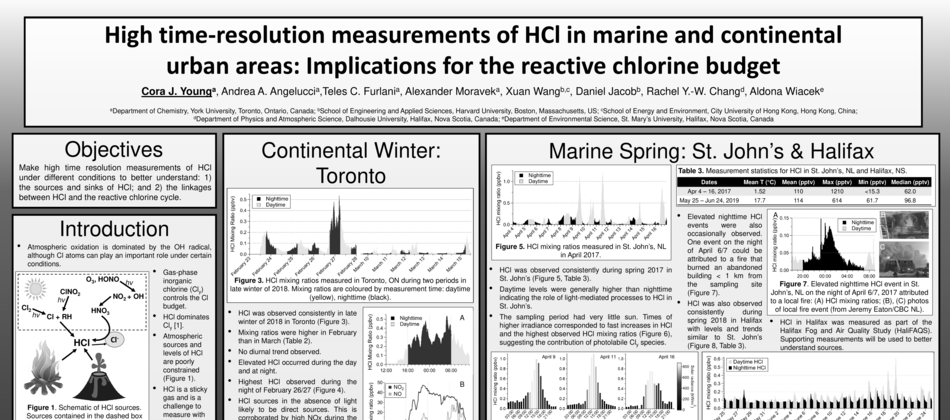
Atmospheric oxidation is dominated by the OH radical, although Cl atoms can play an important role under certain conditions. Gas-phase inorganic chlorine (Cly) controls the Cl budget. HCl dominates Cly[1]. Atmospheric sources and levels of HCl are poorly constrained. HCl is a sticky gas and is a challenge to measure with high time resolution. Most measurements have been made using time-integrated techniques, such as mist chambers(e.g.[2]). Some recent measurements made using chemical ionization mass spectrometry, although issues with calibration and inlet transmission are common(e.g.[1,3]). A recently-available cavity-ring down instrument generates reliable measurements of HCl at 0.5Hz. Spectroscopic technique eliminates most calibration issues, while specially designed instrument reduces surface effects.
aDepartmentof Chemistry, York University, Toronto, Ontario, Canada;
bSchoolof Engineering and Applied Sciences, Harvard University, Boston, Massachusetts, US;
cSchoolof Energy and Environment, City University of Hong Kong, Hong Kong, China;
dDepartmentof Physics and Atmospheric Science, Dalhousie University, Halifax, Nova Scotia, Canada;
eDepartmentof Environmental Science, St. Mary’s University, Halifax, Nova Scotia, Canada
